The great French painter Claude Monet was mesmerized by the effects of sunlight. He noticed that his subjects looked very different depending on whether he captured them in the morning light, at noon, or in the evening, so he painted the same subject again and again at different hours. The art movement we call “impressionism” was named after one of Monet’s paintings of a sunrise.
Here are a few of Monet’s famous “haystack” paintings:



But Monet wasn’t the only great painter who was inspired by the changing sunlight.
In 1952, Norman Rockwell painted a cover for The Saturday Evening Post entitled “A Day in The Life of a Girl.”

Rockwell divided his painting into 22 separate vignettes, starting at dawn and ending after nightfall. Each vignette contains a funny or touching anecdote about the little girl, but look past the anecdotes and you’ll see so much more: each vignette is also a brilliant study of the light at that particular time of day.
The opening vignette is gilded with a brilliant yellow white color.
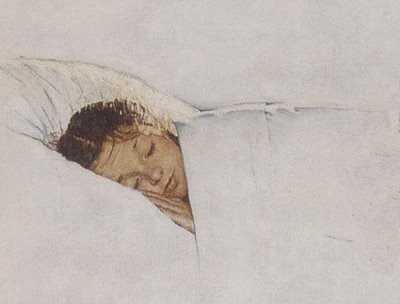
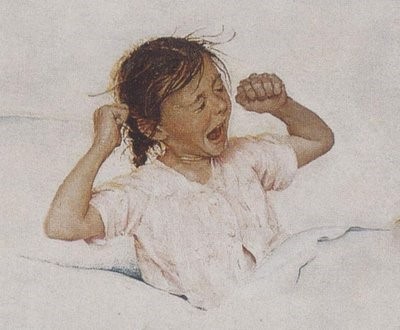
After painting the girl and her friend swimming in the midday sun, Rockwell depicts the children in the cooler glow from the light of a theater marquee.
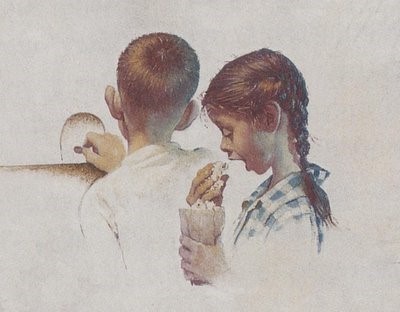
Next he shows them illuminated by the very different light of the silver screen:

Outside again, the children’s skin takes on a completely different color in the moonlight (just like Monet’s haystacks):

Contrast the cool light of that moonlit walk with the warm glow of the bedside lamp as the girl fills out her diary:

Back in bed: compare the ending colors of the girl asleep at night with the beginning colors of her asleep in that that same bed in the morning. You’ll find that Rockwell employs a totally different palette.

It was a challenge for Rockwell to capture all those different figures and expressions properly, but it was a far greater challenge for him to distinguish the morning sunlight from the reflected light of a swimming pool, or the neon light outside a theatre, or the warm glow of a bedside lamp. Fundamentally, the real subject of Rockwell’s painting— just like Monet’s haystacks—is the effect of changing light.
It’s not hard to argue that Rockwell’s painting does a better job of describing changing light conditions than Monet’s. Rockwell describes more variations in natural and artificial light, working in a smaller, humbler space. (Monet was able to tip us off about the time of day by painting the sky light or dark in the background. Rockwell did not have that advantage; he was working with an all-white background so his only tools for persuading us were the subtle hues of the children’s skin and hair, and a few stray props.)
A less talented artist might have been tempted to paint the same skin tones and hair color on the children throughout the painting. After all, the anecdotes would be the same, and this cover was already complex enough with all those small vignettes. Consistent colors would help glue together the composition and provide welcome continuity. But Rockwell set his goals much higher than that. His extraordinary powers of observation were exceeded only by his work ethic.
It would be stretching things to suggest that Rockwell was a French impressionist at heart, but in this painting he clearly takes up the impressionist challenge and triumphs. Don’t stop with Rockwell’s anecdotes; he poured his talent into an extraordinary job of understanding and appreciating changing light conditions, and the result is just as museum-worthy as Monet.
Become a Saturday Evening Post member and enjoy unlimited access. Subscribe now
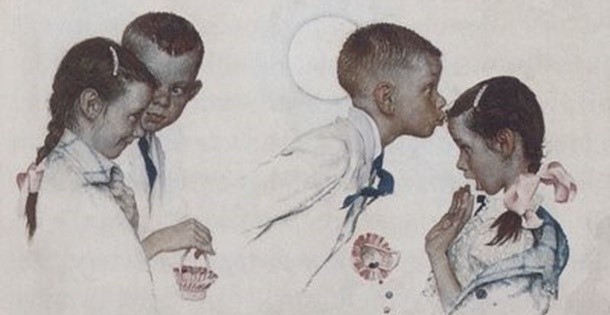

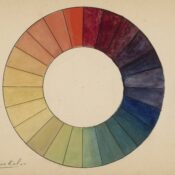

Comments
Bob McGowan, Jr: I’m sure it would never have occurred to Rockwell to think of himself as a French impressionist in any formal sense of the word, just as he would never think of himself as an abstract expressionist when he simulated a Jackson Pollock so convincingly for his Post cover, “Connoiseur.” Yet, isn’t it marvelous that he appreciated the aesthetics and the goals behind these two movements that he could create paintings like these? I can’t help but wonder how Monet would react to “A Day In The Life of a Girl.”
This feature really sheds new light (literally) on the classic, familiar ‘A Day in the Life of a Girl’ Rockwell painted in 1952. I personally became aware of this cover almost 42 years ago when it was reproduced on framing paper in the still very special Bicentennial issue.
At that time and in all the years since, I’ve appreciated this cover for its Rockwell artistry and story telling of a simpler time; same with the ‘Boy’ equivalent, also in that issue (and several other Rockwells).
I feel kind of bad I didn’t appreciate (until now), the deeper nuances and subtleties Rockwell put into it for the realistic changes the light cast at different times of the day, and the effect different lights (natural vs. electric) had on how these children’s skin colors because of it.
As much as we know about Rockwell and the stories behind a lot of his paintings and covers, I think there’s a lot we don’t know. Even when I study his covers and think I’m seeing everything, I now realize I may not be. A lot of it is subtle, for realism, and isn’t meant to ‘stand out’ as such. It’s here we need to take more time to really look at everything a lot more closely—-everything!
I don’t know if Norman Rockwell was secretly a French impressionist or not, but am inclined to think he was an all-American artist/illustrator who certainly studied the European artists that preceded him like Monet, learned from them, and successfully incorporated some of their techniques (making them his own) as needed when needed.